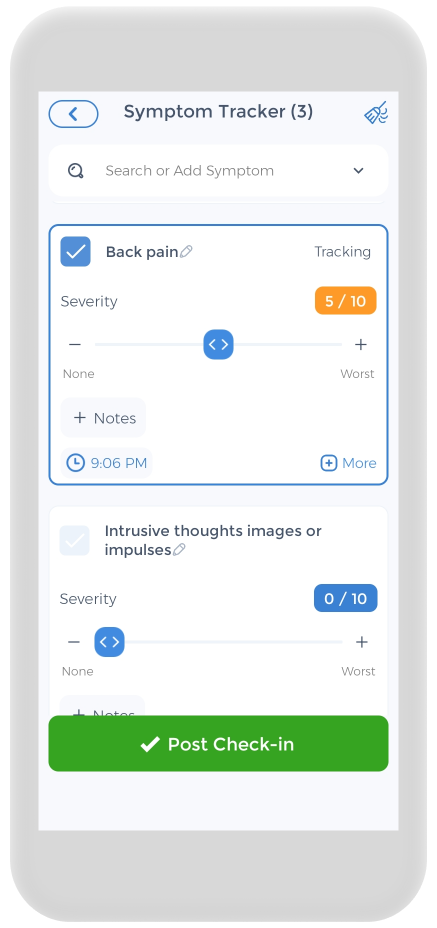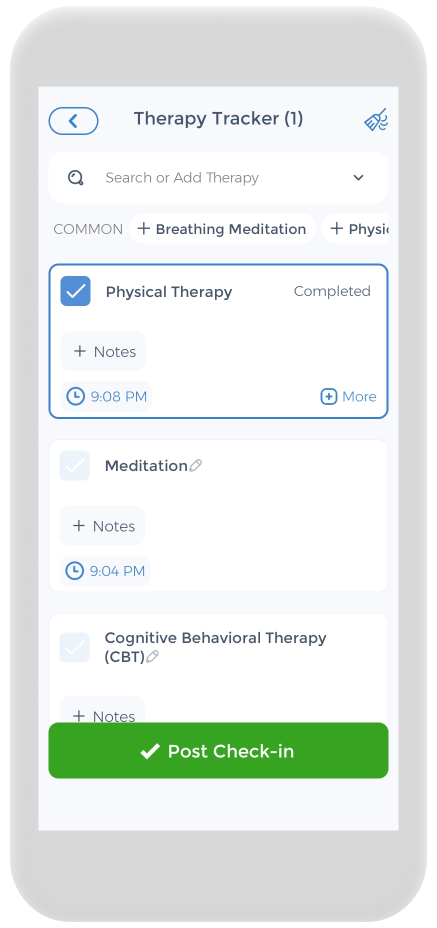
Back pain can be a debilitating condition that affects millions of people worldwide. It can limit mobility, hinder daily activities, and have a significant impact on a person’s quality of life. Fortunately, there are various treatment options available, including epidural injections. In this article, we will delve into the benefits of epidural injections for back pain and explore how they can provide much-needed relief.[1][2]
What is an Epidural?
An epidural injection is a medical procedure commonly used to relieve pain in the lower back and legs. It involves the administration of medication directly into the epidural space, which is the area surrounding the spinal cord. This medication typically consists of a combination of anesthetic and anti-inflammatory drugs, which work together to numb the nerves and reduce inflammation.
When a person experiences chronic or severe pain in their lower back or legs, it can greatly impact their quality of life. Simple tasks like walking, sitting, or even lying down can become excruciatingly painful. In such cases, an epidural steroid injection can provide much-needed relief and improve the overall well-being of the individual.
The Process of Administering an Epidural
The administration of an epidural injection involves a series of steps to ensure its effectiveness and safety. First, the patient is positioned on their side or sitting upright, depending on the preference of the healthcare provider. This positioning is crucial to ensure proper access to the epidural space and minimize any potential complications.
Once the patient is in the correct position, the healthcare provider begins by cleansing the skin thoroughly to prevent any infections. They then apply a local anesthetic to numb the area where the epidural steroid injection will be administered. This local anesthetic helps minimize any discomfort or pain the patient may experience during the procedure.
With the area prepped and the patient comfortable, the healthcare provider carefully inserts a thin needle into the epidural space under the guidance of fluoroscopy, a type of real-time X-ray. This imaging technique allows the provider to visualize the epidural needle’s precise placement, ensuring accuracy and safety.
Once the needle is correctly positioned, a catheter is threaded through the needle, and the needle is removed. The catheter remains in place, allowing for the continuous delivery of medication throughout the treatment period. This continuous delivery ensures that the pain relief is sustained and provides the patient with the maximum benefit of the full epidural steroid injection procedure.
Different Types of Epidurals
There are several types of epidural injections that can be used to treat back pain. The most common are interlaminar epidural injections and transforaminal epidural injections. Interlaminar epidural injections involve the placement of the catheter between two adjacent vertebrae. While transforaminal epidural injections involve directing the catheter to a specific spinal nerve or root by inserting it through a small opening in the spine called the foramen.
Interlaminar epidural steroid injections are often preferred when the pain is spread over a broader area, as they allow for more widespread distribution of the medication. On the other hand, transforaminal epidural injections are typically used when the pain is localized to a specific nerve root, as they provide targeted relief to the affected area.
The choice of epidural injection technique depends on various factors, including the location and severity of the back pain, as well as the individual’s overall health and medical history. A healthcare provider will carefully evaluate these factors and determine the most suitable approach for each patient. Communication between the patient and provider is essential to ensure that the chosen technique aligns with the patient’s needs and goals.
It is important to note that while epidurals can be highly effective in managing pain. They are not a cure for the underlying condition causing the pain. Therefore, it is crucial for individuals receiving epidurals to continue working with their healthcare provider to address the root cause of their pain and develop a comprehensive treatment plan.[3][4][5]
The Science Behind Epidurals and Back Pain
Understanding the science behind epidural injections and how they work to relieve back pain is essential in appreciating their benefits. Epidural steroid injections primarily target the nerves in the spinal cord, reducing pain signals sent to the brain and providing relief. The anesthetic component numbs the nerves, while the anti-inflammatory component reduces inflammation and swelling in the affected area.
in appreciating their benefits. Epidural steroid injections primarily target the nerves in the spinal cord, reducing pain signals sent to the brain and providing relief. The anesthetic component numbs the nerves, while the anti-inflammatory component reduces inflammation and swelling in the affected area.
When an epidural steroid injection is administered, a needle is carefully inserted into the epidural space, which is the area surrounding nerve roots in the spinal cord. This space is filled with cerebrospinal fluid, which acts as a protective cushion for the nerves. The medication is then injected into this space, directly affecting the nerves and interrupting the transmission of pain signals. By inhibiting the nerves’ ability to send pain messages to the brain, epidurals provide significant pain relief and improve overall comfort.
Additionally, the anti-inflammatory properties of the medication reduce swelling and inflammation in the area, further alleviating discomfort. This dual-action approach targets the source of the pain and the associated inflammation, resulting in effective pain management.
How Epidurals Work to Relieve Pain
Now, let’s take a closer look at how epidural steroid injections work to relieve pain. The medication used in epidural steroid injections typically consists of a combination of anesthetics and anti-inflammatory drugs. The anesthetic component, such as lidocaine or bupivacaine, blocks the transmission of pain signals by binding to and inhibiting specific receptors on the nerves. This numbing effect helps to alleviate pain and provides immediate relief.
On the other hand, the anti-inflammatory component, often corticosteroids, works by reducing inflammation in the affected area. Inflammation is a natural response of the body to injury or irritation, but it can also contribute to pain and discomfort. By suppressing the immune system’s response and blocking the production of inflammatory substances, corticosteroids help alleviate pain and promote the healing process.
Furthermore, epidural steroid injections can be administered at different levels of the spine. Depending on the location and severity of the back pain. For example, in lumbar epidural steroid injections, steroid injections target the lower back (lumbar spine), where many individuals experience chronic pain due to conditions like herniated discs or spinal stenosis. By delivering the medication directly to the affected area, epidural steroid injections can provide targeted and precise pain relief.
The Role of Steroids in Epidurals
Steroids, such as corticosteroids, are often included in the medication administered during epidural corticosteroid injections. These powerful anti-inflammatory drugs enhance the pain-relieving effects of the procedure by reducing inflammation and swelling even further.
Corticosteroids work by mimicking the effects of hormones naturally produced by the body’s adrenal glands. They bind to specific receptors in cells and block the production of inflammatory substances, such as prostaglandins and leukotrienes. By doing so, they help alleviate pain and promote the healing process.
Furthermore, corticosteroids have immunosuppressive properties, meaning they suppress the immune system’s response. In the context of epidural corticosteroid injections, this can be beneficial as it reduces the immune system’s inflammatory response to the medication itself, minimizing any potential side effects or complications.
The addition of steroids to epidural steroid injections can provide more significant and longer-lasting relief for individuals with chronic or severe back pain. By combining the numbing effects of anesthetics with the potent anti-inflammatory properties of corticosteroids, epidural steroid injections offer a comprehensive approach to pain management.
Overall, epidural steroid injections are a scientifically advanced and effective method for relieving back pain. By targeting the nerves in the spinal cord and reducing inflammation, they provide significant pain relief and improve overall comfort. The addition of corticosteroids further enhances their pain-relieving effects, making epidurals a valuable option for individuals seeking long-lasting relief from chronic or severe back pain.[6][7][8][9][10]
Benefits of Using Epidurals for Back Pain
One of the primary benefits of epidural steroid injections for back pain is their ability to provide immediate relief. As the medication is administered directly to the affected area, the effects are felt quickly, allowing individuals to experience significant pain reduction soon after the procedure. This immediate relief is particularly beneficial for individuals experiencing severe or acute back pain, enabling them to regain their mobility and engage in daily activities more comfortably.
But what exactly happens when an epidural steroid injection is administered for back pain? When the procedure begins, the patient is positioned on their side or sitting upright, depending on the preference of the healthcare provider. The area where the needle will be inserted is cleaned and sterilized to minimize the risk of infection. Then, a local anesthetic is used to numb the skin and tissues around the injection site, ensuring that the patient experiences minimal discomfort during the procedure.
Immediate Pain Relief
 Epidural steroid injections are highly effective in providing immediate pain relief, allowing individuals to gain control over their pain and improve their quality of life. By reducing pain and enabling better function, epidurals can enhance mobility and restore the ability to participate in activities that were previously limited or impossible due to back pain.
Epidural steroid injections are highly effective in providing immediate pain relief, allowing individuals to gain control over their pain and improve their quality of life. By reducing pain and enabling better function, epidurals can enhance mobility and restore the ability to participate in activities that were previously limited or impossible due to back pain.
Once the area is numb, a thin needle is carefully inserted into the epidural space. Which is the area surrounding the spinal cord and the nerves that transmit pain signals. A small amount of contrast dye may be injected to ensure that the needle is in the correct position before the medication is administered. Then, the medication, typically a combination of a local anesthetic and a corticosteroid, is slowly injected into the epidural space. The medication works by numbing the nerves and reducing inflammation, providing immediate relief from back pain.
Long-Term Benefits for Chronic Back Pain
In addition to immediate pain relief, epidurals also offer long-term benefits for chronic back pain. By targeting the source of the pain and reducing inflammation, epidurals can provide lasting relief for individuals suffering from persistent or recurring back pain.
It is important to note that epidurals for back pain are not a permanent solution. The duration of pain relief varies from person to person, and some individuals may require multiple injections over time to maintain the benefits. However, epidurals can provide significant and prolonged relief, allowing them to manage their chronic back pain more effectively.
Furthermore, epidurals can complement other treatment approaches for chronic back pain, such as physical therapy or alternative therapies. By reducing pain, epidurals can make it easier for individuals to engage in and benefit from these treatments, ultimately accelerating the healing process and improving overall outcomes.
It is important to consult with a healthcare provider to determine if epidurals are a suitable treatment option for back pain, as they may not be appropriate for everyone. However, for many individuals, epidurals can be a valuable tool in managing and alleviating the debilitating effects of back pain.[11][12][13]
Potential Risks and Side Effects of Epidurals
Like any medical procedure, epidurals carry certain risks and can potentially cause side effects. It is crucial to be aware of these potential complications and discuss them with a healthcare provider before opting for an epidural injection.
Epidurals, while commonly used for pain relief during childbirth or surgery, are not without their share of side effects and risks. These effects can vary from mild and temporary discomfort to more severe complications that require medical attention. Individuals need to have a comprehensive understanding of the potential risks associated with epidurals.
Common Side Effects
Some common side effects of epidurals include temporary numbness or weakness in the legs, headaches, and increased discomfort at the injection site. These side effects are usually temporary and resolve on their own without requiring additional treatment. However, individuals should seek medical attention if they experience severe or prolonged side effects.
Temporary numbness or weakness in the legs is a common occurrence after receiving an epidural injection. This is typically due to the local anesthetic used in the procedure, which can affect the nerves temporarily. However, this sensation usually subsides as the effects of pain medicine and the anesthetic wear off.
Headaches are another common side effect of epidurals. These headaches can occur due to a leakage of cerebrospinal fluid from the spinal canal, which can happen when the needle used for the epidural accidentally punctures the membrane surrounding the spinal cord. While these headaches can be quite uncomfortable, they often resolve on their own within a few days.
In some cases, individuals may experience increased discomfort at the injection site. This can be due to inflammation or irritation caused by the needle or the medication injected. However, this discomfort is usually temporary and can be managed with over-the-counter pain relievers.
Serious Complications and How to Avoid Them
While serious complications from epidurals are rare, they can occur. These complications can include infection, nerve damage, bleeding, or allergic reactions. To minimize the risk of complications from epidural anesthesia, it is essential to ensure that the procedure is performed by a qualified healthcare professional experienced in administering epidurals.
Infection is a potential serious complication of epidurals. This can occur if bacteria enter the injection site or if proper sterilization techniques are not followed. It is crucial for healthcare providers to adhere to strict hygiene protocols to prevent infections. Signs of infection include increased pain, redness, swelling, or discharge at the injection site.
Nerve damage is another rare but serious complication that can occur with epidurals. This can happen if the needle used for the procedure damages a nerve or if the medication injected affects the nerves in an unintended way. Symptoms of nerve damage may include persistent numbness or weakness in the legs, loss of bladder or bowel control, or shooting pain along the affected nerve.
Bleeding is a potential risk during or after an epidural procedure. While bleeding is rare, it can occur if a blood vessel is accidentally punctured during the insertion of the needle. Healthcare providers should carefully monitor for signs of bleeding, such as excessive bruising, swelling, or a rapid heart rate.
Allergic reactions to the medication used in epidurals are extremely rare but can occur. It is important for individuals to inform their healthcare provider about any known allergies or sensitivities to medications before undergoing the procedure. Healthcare providers should also be prepared to manage allergic reactions promptly and effectively.[14][15]
Comparing Epidurals to Other Back Pain Treatments
When considering treatment options for back pain, it is crucial to compare epidurals to other available approaches, such as physical therapy or surgery. Understanding the differences between these treatments can help individuals make informed decisions about their care.
Epidurals vs. Physical Therapy
Epidurals and physical therapy can complement each other in treating back pain. While epidurals provide immediate pain relief, physical therapy focuses on strengthening the muscles and improving flexibility to prevent future pain episodes. By combining epidurals with physical therapy, individuals can experience both short-term relief and long-term improvement in their back pain symptoms.
provide immediate pain relief, physical therapy focuses on strengthening the muscles and improving flexibility to prevent future pain episodes. By combining epidurals with physical therapy, individuals can experience both short-term relief and long-term improvement in their back pain symptoms.
Physical therapy is a non-invasive treatment approach that involves a variety of exercises and techniques to improve strength, flexibility, and mobility in the back. These exercises are tailored to the individual’s specific needs and may include stretching, core strengthening, and postural correction. Physical therapists also provide education on proper body mechanics and ergonomics to prevent further strain on the back.
One of the key benefits of physical therapy is its focus on addressing the underlying causes of back pain. Targeting weak muscles, poor posture, and imbalances in the body, physical therapy aims to correct these issues. It prevents future pain episodes. It also empowers individuals to take an active role in their own recovery by providing them with tools and techniques to manage their pain independently.
While epidurals provide immediate pain relief, they are not a long-term solution on their own. They primarily target the symptoms of back pain by reducing inflammation and numbing spinal nerves in the affected area. This temporary relief can be beneficial for individuals experiencing severe pain or those who are unable to participate in physical therapy due to their condition.
However, it is important to note that epidurals do not address the underlying causes of back pain. They are typically administered as a part of a comprehensive treatment plan that includes physical therapy or other non-invasive approaches. By combining epidurals with physical therapy, individuals can maximize their chances of long-term pain relief and improved function.
Epidurals vs. Surgery
For some individuals with severe or persistent back pain, surgery may be considered. However, surgery is typically an invasive and more complex procedure compared to epidurals. Epidurals can be a less invasive alternative to surgery, providing pain relief without the need for extensive recovery time. It is important to consult with a healthcare provider to determine the most appropriate treatment option based on individual circumstances.
Surgery for back pain is usually reserved for cases where conservative treatments, such as epidurals and physical therapy, have not provided sufficient relief. It may be recommended for conditions such as herniated discs, spinal stenosis, or degenerative disc disease. The goal of surgery is to address the underlying structural issues in the spine, such as removing a herniated disc or stabilizing the spine through fusion.
While surgery can be effective in relieving back pain, it carries risks and requires a significant recovery period. The decision to undergo surgery should be carefully considered and discussed with a healthcare provider. Factors such as the individual’s overall health, the severity of the condition, and the potential benefits and risks of surgery should all be taken into account.
Epidurals, on the other hand, offer a non-invasive alternative to surgery for individuals. Who are not ready or suitable for a surgical procedure. They can provide temporary pain relief and allow individuals to continue with their daily activities while exploring other non-invasive treatment options. However, it is important to note that epidurals are not a permanent solution and may need to be repeated periodically depending on the individual’s condition.[16][17]
Making the Decision: Is an Epidural Right for You?
Deciding whether an epidural is the right treatment option for back pain involves considering various factors and consulting with a healthcare provider. Each individual’s situation is unique, and a personalized approach is necessary to determine the most suitable course of action.
Factors to Consider
When contemplating epidural treatment, it is essential to consider the severity of the back pain. Previous treatment outcomes, overall health, and personal preferences. It is also crucial to have an open and honest discussion with a healthcare provider, who can provide expert advice and guidance based on individual needs and circumstances.
Consulting with Your Doctor
Your healthcare provider is your best source of information and guidance when considering epidural treatment for back pain. They can evaluate your condition, discuss the benefits and potential risks, and help determine whether an epidural is a suitable treatment option for you. By collaborating with your doctor, you can make an informed decision that aligns with your specific needs and goals.
Back pain can have a profound impact on daily life, limiting mobility and causing continuous discomfort. Understanding the benefits of epidurals for back pain can empower individuals to explore effective treatment options. Regain control over their lives. By providing immediate relief, long-term benefits, and complementing other treatment approaches, epidurals offer a promising solution for individuals seeking effective pain management and improved quality of life.
Using the CareClinic App to Manage Pain
Keeping a pain journal is beneficial to your health, and the CareClinic app can assist you in doing so. The app also functions as a clinical and health journal. Simply keep a pain diary in the app and keep track of your daily symptoms, medications, and triggers. Other software components are dedicated to tracking each of them. This can help you identify early warning signs. The app is meant to help you improve your chronic low back pain and acute pain-related health. Especially if you have chronic low back pain, neck discomfort, acute injuries or traumatic injuries, common knee injuries, autoimmune illness, acute inflammation, meniscus tear, or reactive arthritis.
Sources
- https://www.ninds.nih.gov/health-information/disorders/pain
- https://painbc.ca/health-professionals/education/OT-workshop
References
- “Lumbar Epidural Steroid Injections: What It Is, Benefits, Risks & Side Effects”. https://my.clevelandclinic.org/health/treatments/22091-lumbar-epidural-steroid-injection
- “Review finds limited long-term benefit with epidural injections for back pain | epocrates”. https://www.epocrates.com/online/article/review-finds-limited-long-term-benefit-with-epidural-injections-for-back
- “Epidural Injections”. https://www.radiologyinfo.org/en/info/epidural
- “Epidural injections for back pain: MedlinePlus Medical Encyclopedia”. https://medlineplus.gov/ency/article/007485.htm
- “There Are 3 Types of Epidurals: Which One is Right for You?: Advanced Spine and Pain Centers: Orthopedic Specialists”. https://www.advancedspineandpain.com/blog/there-are-3-types-of-epidurals-which-one-is-right-for-you
- “Clinical Pharmacology of Corticosteroids | Respiratory Care”. https://www.liebertpub.com/doi/full/10.4187/respcare.06314
- “Physiologic and Pharmacologic Effects of Corticosteroids – Holland-Frei Cancer Medicine – NCBI Bookshelf”. https://www.ncbi.nlm.nih.gov/books/NBK13780/
- “How Epidural Steroid Injections Work | Spine-health”. https://www.spine-health.com/treatment/injections/how-epidural-steroid-injections-work
- “Epidural Steroids Injection: Basics and Updates | Musculoskeletal Key”. https://musculoskeletalkey.com/epidural-steroids-injection-basics-and-updates/
- “Epidural steroid injection”. https://en.wikipedia.org/wiki/Epidural_steroid_injection
- “Epidural Steroid Injection (ESI): What It Is, Benefits, Risks & Results”. https://my.clevelandclinic.org/health/treatments/22301-epidural-steroid-injection-esi
- “Epidural steroid injection therapy for low back pain: a meta-analysis”. https://pubmed.ncbi.nlm.nih.gov/23769210/
- “Effectiveness of Epidural Steroid Injections for Low Back Pain | AAFP”. https://www.aafp.org/pubs/afp/issues/2022/0700/fpin-hda-epidural-steroid-injections-low-back-pain.html
- “Understanding Epidural Anesthesia: Benefits, Risks and Considerat”. https://www.openaccessjournals.com/articles/understanding-epidural-anesthesia-benefits-risks-and-considerations-17781.html
- “Guide to Epidural Anesthesia for Labor and in Surgery – HealthProAdvice”. https://healthproadvice.com/procedures/Understanding-Epidural-Anesthesia
- “Effectiveness of Physical Therapy Combined With Epidural Steroid Injection for Individuals With Lumbar Spinal Stenosis: A Randomized Parallel-Group Trial”. https://pubmed.ncbi.nlm.nih.gov/30703349/
- “Treatment of lumbar disc herniation: epidural steroid injection compared with discectomy. A prospective, randomized study – PubMed”. https://pubmed.ncbi.nlm.nih.gov/15069129/
- “FDA Drug Safety Communication: FDA requires label changes to warn of rare but serious neurologic problems after epidural corticosteroid injections for pain | FDA”. https://www.fda.gov/drugs/drug-safety-and-availability/fda-drug-safety-communication-fda-requires-label-changes-warn-rare-serious-neurologic-problems-after
- “Five Apps for Chronic Pain Sufferers: Maryland Pain & Wellness Center: Pain Management”. https://www.marylandpainandwellnesscenter.com/blog/five-apps-for-chronic-pain-sufferers


